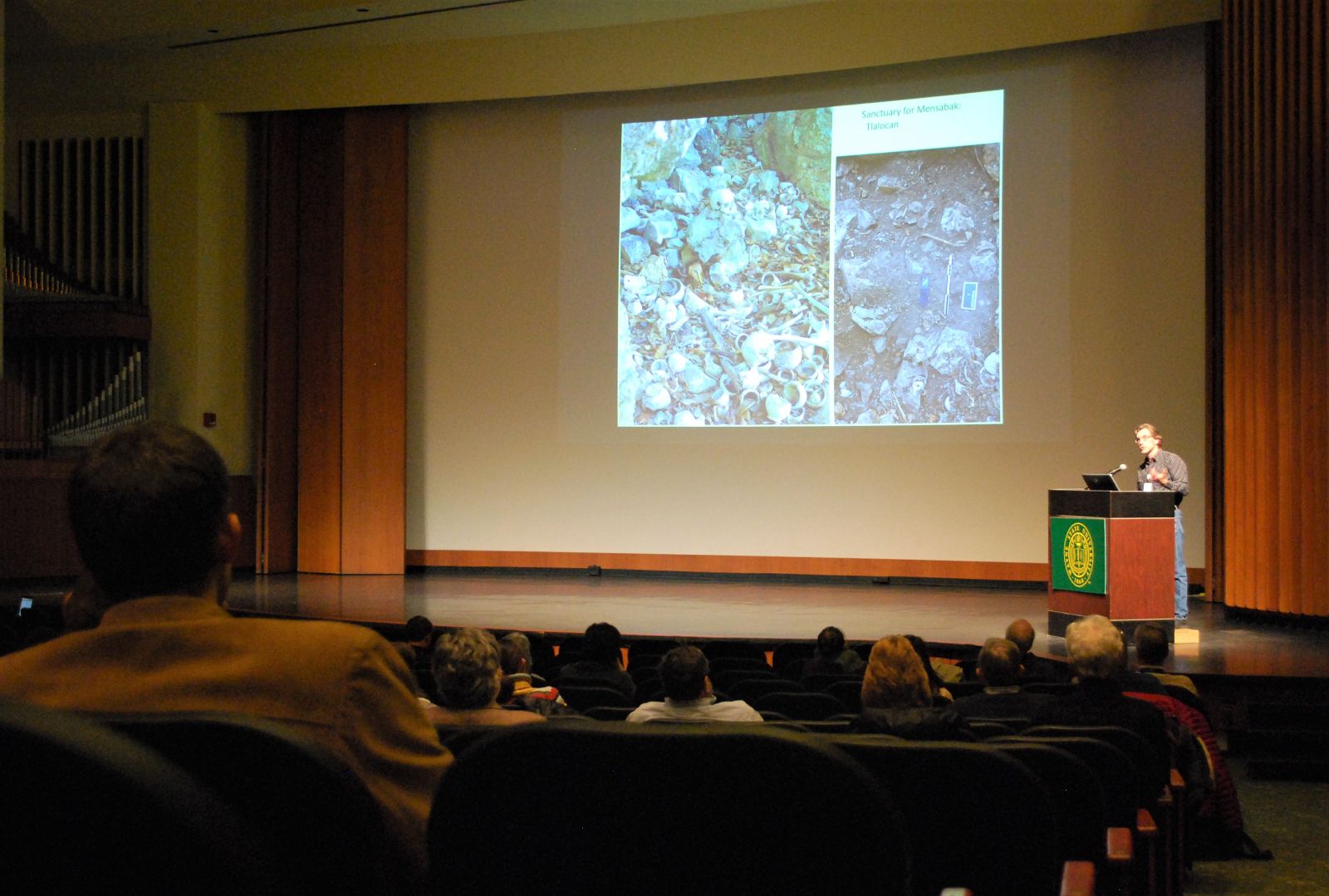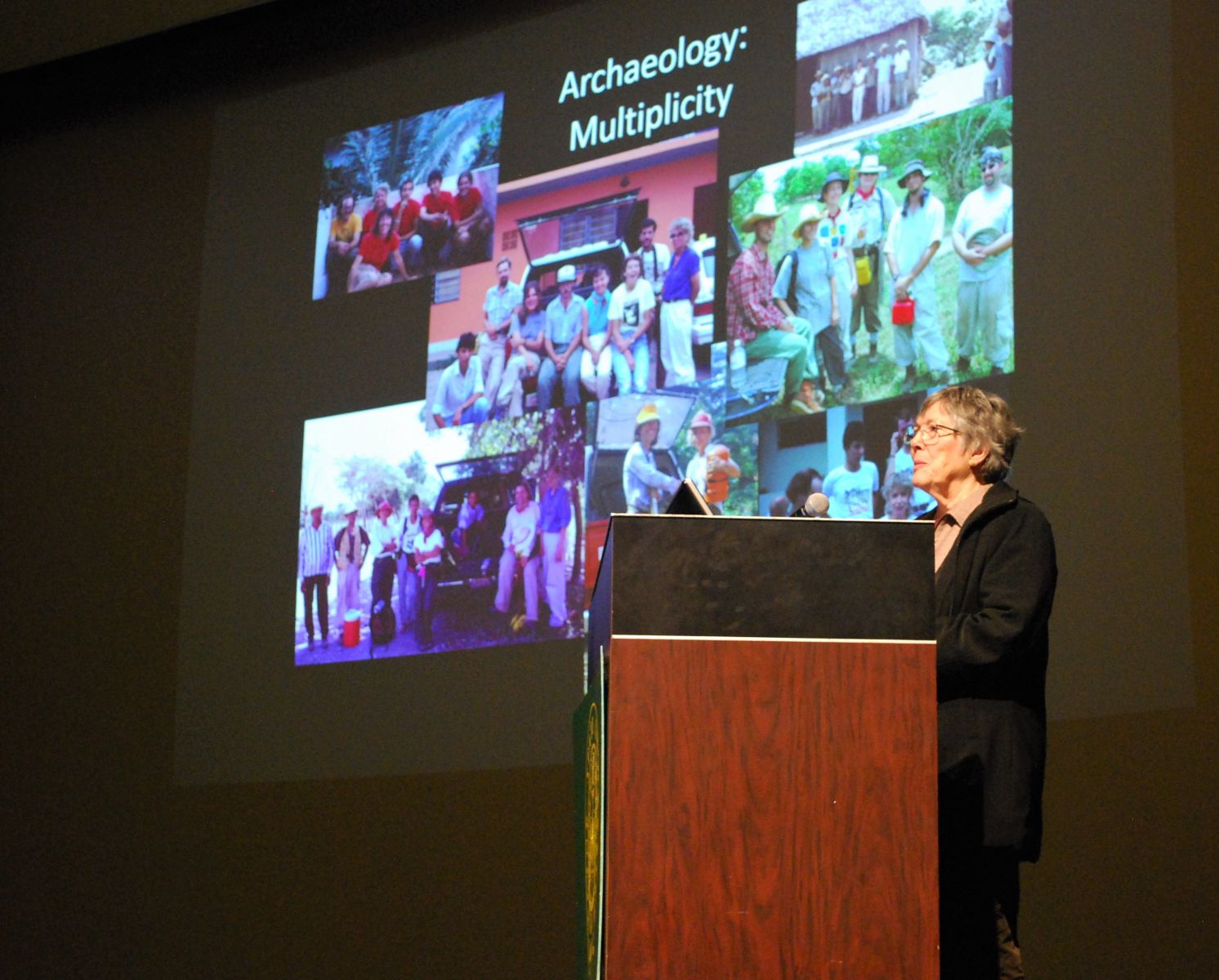Mesoamerican archaeology conference celebrates 40 years
Archaeologists, anthropologists and academics gathered at Wayne State for the 40th annual Midwest Conference on Mesoamerican Archaeology and Ethnohistory (MAMAE) on March 10-11.

The conference draws in 75-100 professional and graduate student participants across the Midwest and Canada to showcase fieldwork, analyses, and interpretations of research in Mexico and Central America each year. The conference's format emphasizes a relaxed and collegial atmosphere, with time for comments and questions after each presentation.
"The tradition here is as much a social event as it is a research, scholarly event," WSU professor Tom Killion said in his introductory speech.
As the MAMAE conference organizer this year, Killion said he invited Barbara Stark, professor emeritus at Arizona State University, to be the keynote speaker because, to him, she's a true leader in the field. Stark has contributed nearly five decades of research in Mesoamerican archaeology.

"She's an outstanding scholar, and she's a highly creative researcher," he said.
Killion became aware of her work in the early 80s, when he joined an archaeological project at Matacapan in Veracruz, Mexico as a ceramicist, and has been following Stark's publications and work on myriad topics, including Aztec tributes, Mesoamerican coastal cities, ceramic production and ethnoarchaeology, since then.
"The direction of her research, her intellectual contribution, her publications, her accomplishments are simply spectacular," Killion said.
Students and faculty from the University of Chicago, Michigan State University, Eastern Michigan University, West Virginia University, University of Illinois at Chicago, University of Kentucky, University of Michigan and Northern Illinois University presented research at this year's conference.
One of which was James Meierhoff, a Ph.D. candidate at the University of Illinois at Chicago and research assistant for the Field Museum of Natural History who has attended the MAMAE conference for 15 consecutive years. In his presentation, Meierhoff discussed the 19th-century explorations of the ancient Maya ruins of Tikal, along with historical disturbances, such as probing and looting, that subsequently occurred at the site.
The highlight of the conference, Meierhoff wrote, was meeting Hattula Moholy-Nagy, an archaeologist who first excavated his site, Tikal, in the 1960s.
He also enjoys the chance to present data, research, ideas, theories and concepts at the conference that may not be in their final form, because the low-stress informal environment encourages attendees to give each other feedback.
"Science is no longer the lone (often mad) scientist on the hill working alone," Meierhoff wrote. "We work best as a team, and not in isolation."